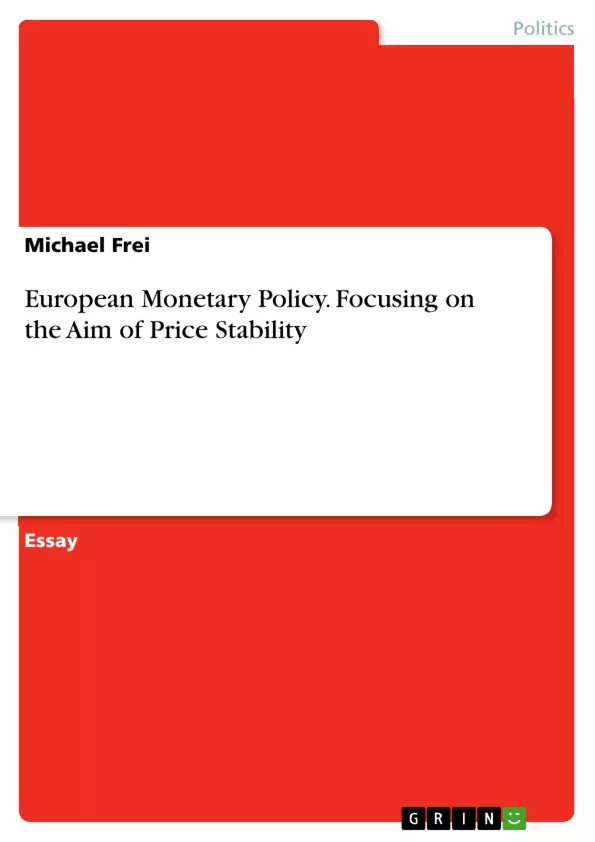One of the most important objectives of the European Central Bank is the decision on its single Monetary Policy. The European Central Bank is the sole issuer of banknotes and bank reserves therefore the monopoly provider of the monetary base of an economy. This makes this institution the only one which has the needed instruments to make monetary policy.
The ECB determined “price stability” as main intention of its policy because there is a contemporary consensus that inflation slashes the performance of economies strongly. The aim of this paper is to analyze why and how successful the European Central Bank has several instruments to achieve this important goal.
The aim of this paper is to discuss the main goal of the European Monetary Policy and to analyze the instruments which can be used to maintain this goal. Finishing with a short evaluation about how successful the European Monetary Policy is.
Inhaltsverzeichnis (Table of Contents)
- Introduction
- European Monetary Policy in General
- Importance of Price Stability
- Instruments to make Monetary Policy
- Comparison with the Federal Reserve Bank in the U.S.
- Conclusion
Zielsetzung und Themenschwerpunkte (Objectives and Key Themes)
This paper analyzes the European Central Bank's monetary policy with a focus on its primary objective of price stability. It explores the reasons behind this focus and examines the instruments the ECB employs to achieve this goal. The paper also evaluates the effectiveness of the ECB's monetary policy in achieving its stated objectives.
- Importance of price stability for economic growth and employment
- Impact of inflation on economic performance
- Instruments used by the ECB to achieve price stability
- Challenges to achieving price stability in a multi-currency environment
- Comparison of ECB's policy with the Federal Reserve Bank in the U.S.
Zusammenfassung der Kapitel (Chapter Summaries)
- Introduction: This chapter introduces the European Central Bank (ECB) as the sole issuer of banknotes and bank reserves in the Eurozone. It establishes the ECB's primary objective of price stability and outlines the paper's purpose to analyze how the ECB achieves this goal.
- European Monetary Policy in General: This chapter discusses the significance of a single monetary policy in the context of the Eurozone. It highlights the challenges posed by differing fiscal policies among member states and the potential divergence caused by regional inflation rates and growth dynamics.
- Importance of Price Stability: This chapter explores the rationale behind the ECB's focus on price stability, emphasizing the consensus among economists that low inflation is crucial for sustainable economic growth. It delves into the ECB's definition of price stability and its rationale for setting a target inflation rate close to, but not exceeding, 2%. The chapter also examines the historical shift in economic thinking about the relationship between inflation and economic growth, acknowledging the negative consequences of high inflation.
Schlüsselwörter (Keywords)
The key concepts and themes of this paper revolve around European Monetary Policy, price stability, inflation, economic growth, employment, the European Central Bank, and the Federal Reserve Bank. The paper explores the instruments used by the ECB to achieve price stability and compares the ECB's approach to that of the Federal Reserve.
- Quote paper
- Michael Frei (Author), 2009, European Monetary Policy. Focusing on the Aim of Price Stability, Munich, GRIN Verlag, https://www.grin.com/document/230776



